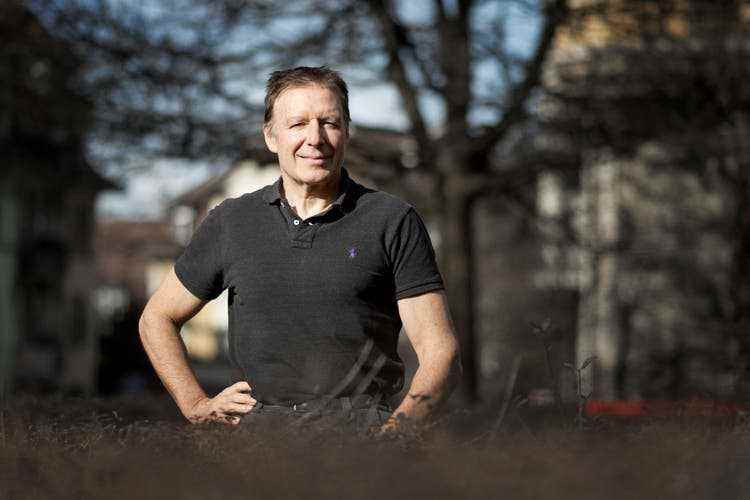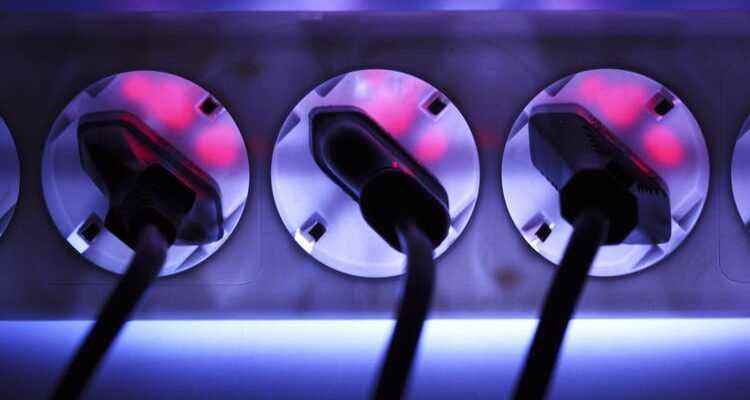By 2050, solar power should compensate for electricity from nuclear power plants and meet the growing demand. The risk researcher Didier Sornette from ETH Zurich considers this federal strategy to be technically and economically flawed.
According to Didier Sornette, the Energy Strategy 2050 gives rise to fears that Switzerland is heading towards huge electricity deficits.
Next winter there is a risk of an energy crisis. Switzerland is preparing for a gas and electricity shortage. As if that weren’t bad enough, a renowned researcher from ETH Zurich is now ignoring the long-term energy strategy 2050, with which Switzerland is supposed to get rid of fossil fuels and which the people approved in 2017 with a yes vote of 58 percent Has.
Risk researcher Didier Sornette criticizes the authorities for being overly optimistic about the transition from today’s energy system to one that is largely based on solar power. This creates a dangerous illusion of security and control, they say in a new working paper by Sornette and his fellow researcher Euan Mearns.
When there is no sun in winter
What brings the two to their verdict? In a first step, Mearns and Sornette reconstructed Swiss electricity production and demand in January and July 2017 from various sources, hour by hour. They chose 2017 because it is the most recent year for which detailed figures are available. Next, the researchers incorporated the main pillars of the Energy Strategy 2050 into their model.
On the one hand, this means that the demand for electricity will grow by 37 percent by 2050 because people are switching to electric cars and replacing fossil-based heating systems with heat pumps. On the other hand, according to the plans, the production of solar power should increase by a factor of 20 and thus largely replace the production from four nuclear power plants, which will be shut down by then.
Finally, in a third step, the months of January and July 2017 examined are transferred to the year 2050, provided that the energy strategy is implemented. In their calculations, the researchers have now come to the conclusion that Switzerland is threatened with an enormous electricity deficit in January 2050. As much as 69 percent of electricity that month would have to be imported from the rest of Europe. That would be 6 terawatt hours. For comparison: In recent years, Switzerland has imported an average of 4 terawatt hours over the winter half-year. In 2050 it would be one and a half times as much in January alone.
Although enormous amounts of solar modules would have been installed by 2050, they would only cover 4 percent of the total demand in January, assuming the weather conditions of 2017. One might argue that January 2017 was a decidedly bad month for solar power. So isn’t Sornette far too pessimistic? The 65-year-old replies that one never lives in an “average month”, but that months with little sun like the beginning of 2017 will also occur in the future. A power supply must be prepared for exactly such months, not for the average.
Since the neighboring countries, with the possible exception of France, are likely to pursue very similar strategies, Switzerland will then not be able to cover its electricity shortfall with imports. If there is nothing to be gained from abroad, the focus is on the inside. Could surplus electricity from the summer be stored and thus shifted to the winter?

For the physicist Didier Sornette, Professor of Entrepreneurial Risks at the ETH since 2006, nuclear energy belongs in the Swiss electricity mix, together with hydroelectric power and solar power.
The first thing that stands out in the study is that the estimated surplus in July 2051, at 0.74 terawatt hours, is only a fraction of the power gap of 6.1 terawatt hours in January. The goal of the energy strategy, that Switzerland produces as much electricity as it consumes over the year, is unlikely to be met.
How would you shift the summer electricity to the winter months? You could use electric batteries for this. If the price of batteries halved from today, the cost would still be $111 billion. With a 20-year lifetime, the researchers say the megawatt-hour (MWh) of electricity stored for the winter would be $10,597. If you consider that just a year ago one MWh cost around 50 dollars, you quickly realize that such a solution would be uneconomical.
If the entire missing 6 terawatt hours could be stored in batteries in the summer, it would cost as much as 1.3 trillion dollars – this corresponds to almost twice the current Swiss gross domestic product.
An alternative would be the transition to a hydrogen economy. Hydrogen is first obtained from water by means of electrolysis. The electricity for the electrolysis comes from the excess solar power in summer. The hydrogen is then stored until it is burned in a power plant in winter and converted back into electricity.
This solution is also likely to be extremely expensive. A new infrastructure is needed, which is only used sporadically. In addition, one has to reckon with considerable conversion losses of 70 percent. According to estimates, storing the excess summer solar power in this way could only cover 3.6 percent of the power shortage in January. With batteries it would be 8.5 percent.
Electricity mix with nuclear power
Even if the solar modules were increased by a factor of 40 instead of 20, this did little to change the fundamental problem. That would only reduce import demand in January from 6 to 5.8 terawatt hours. After all, Sornette sees an interesting alternative in alpine solar systems, as they produce significantly more electricity in winter than systems in the Central Plateau.
The ETH researcher draws a sobering conclusion: the energy crisis will slowly escalate every time one of the four remaining nuclear power plants is taken out of operation. Disruptions are also to be feared if neighboring countries shut down power plants that produce base load energy. The uncertainty and inconsistency of the energy transition will drive up interest rates for capital-intensive projects, which may call the state into action.
Sornette considers the Energy Strategy 2050 to be technically and economically unfeasible. Instead, his heart beats for new nuclear power plants because they provided energy 80 to 90 percent of the time. With this technology, he went from Saul to Paul, he says in an interview. His study showed that it was almost impossible to replace nuclear power plants with solar power. In addition, the space and material requirements for new nuclear power plants are much lower than those for the huge solar or wind farms they are intended to replace.
For risk researcher Sornette, the optimal electricity mix for Switzerland therefore consists of nuclear power together with domestic hydropower and an expansion of solar energy, particularly in the Alps. The physicist Sornette, who holds the Chair for Entrepreneurial Risks at the ETH, does not represent a “mainstream” attitude among scientists.
He has the impression that scientists sometimes put the desire not to offend political and social sensibilities ahead of the pursuit of a workable energy policy. Sornette has set out to disrupt the fair somewhat with his latest publication.
